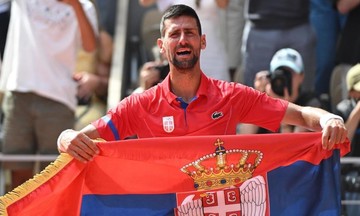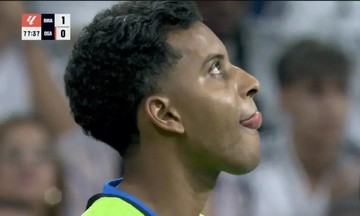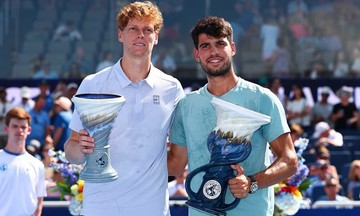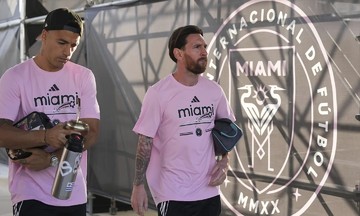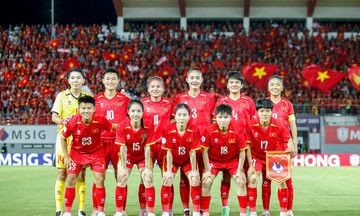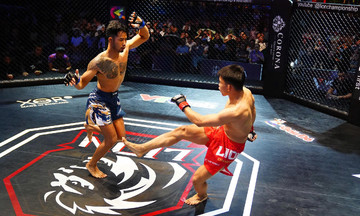Sinner began wearing the sleeve two days after he fell and injured his right elbow during his match against Grigor Dimitrov in the Wimbledon quarterfinals. The 23-year-old went on to win the grass-court Grand Slam title with the sleeve covering a medical bandage. Almost a month later, at the Cincinnati Open, Sinner has removed the bandage and confirmed the pain is gone, yet he retains the compression sleeve.
Sinner practiced in Cincinnati with his right arm wrapped in the compression sleeve. He continued to wear it during his 58-minute 6-1, 6-1 victory over Daniel Galan, his fastest career win excluding walkovers.
The white sleeve remained on Sinner's arm as he defeated Gabriel Diallo 6-2, 7-6 (6), Adrian Mannarino 6-4, 7-6 (4), and Felix Auger-Aliassime 6-0, 6-2 in the subsequent rounds.
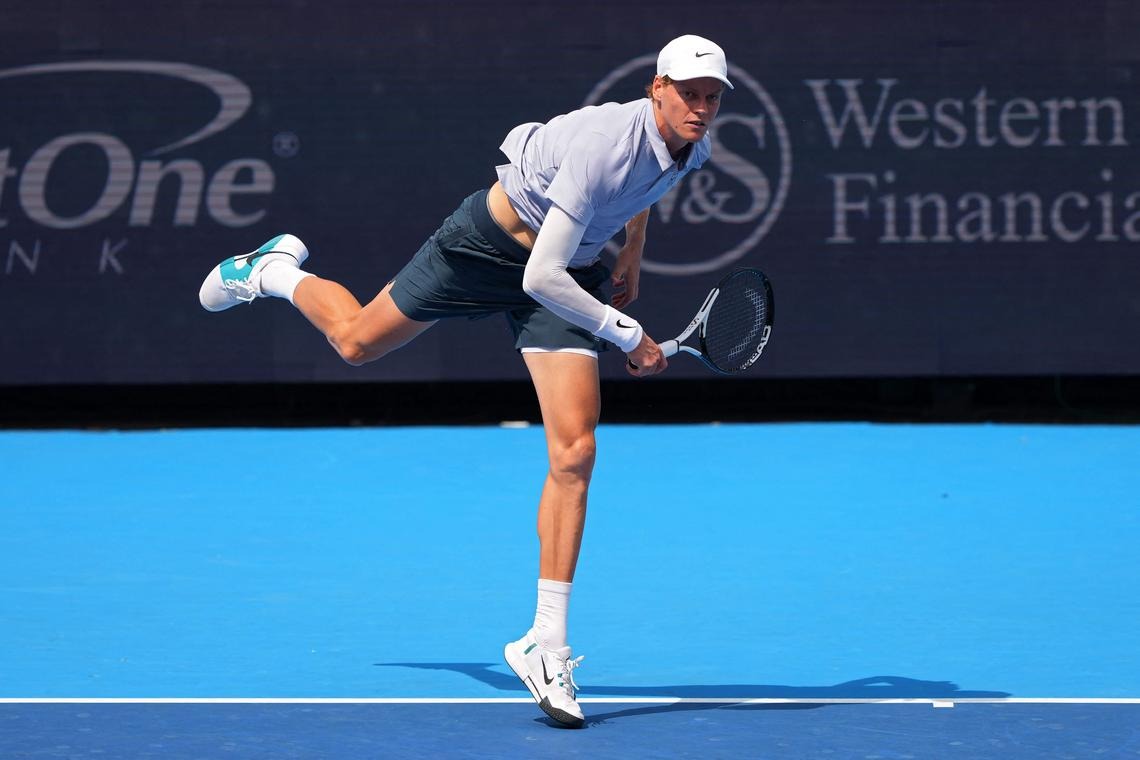 |
Sinner during his win over Auger-Aliassime in the Cincinnati Open quarterfinals on 14/8. Photo: AFP |
Sinner during his win over Auger-Aliassime in the Cincinnati Open quarterfinals on 14/8. Photo: AFP
"I continue to wear the compression sleeve because it gives me more power and stability. I really like the strong feeling it provides," Sinner explained to French newspaper L'Equipe yesterday, 14/8.
Sinner is not alone. Many other athletes continue wearing compression sleeves after recovering from injuries simply for peace of mind. Corentin Denolly, a 28-year-old French tennis player ranked 310th in the world, had a custom sleeve made a few years ago after experiencing muscle pain and burning sensations in his forearm. Even though the pain has subsided, he finds it difficult to play without it.
"Recently, after recovering from a left wrist injury, I didn't feel comfortable playing without a sleeve," Denolly said. "The feeling of having my arm tightly wrapped helps reduce shock. Whenever my arm feels tired or weak, wearing the sleeve makes me feel better."
Many other tennis players follow this trend. Carlos Alcaraz has worn a sleeve in some matches, while Karolina Muchova, Lorenzo Musetti, Arthur Cazaux, and Benjamin Bonzi use them more regularly. The trend of using compression sleeves is also popular in the NBA thanks to superstars like Allen Iverson and LeBron James, and has even spread to volleyball. "While practicing serves with a ball machine at 120-130 km/h, I got a huge bruise from my wrist to my elbow, incredibly painful. I kept playing through the pain and probably damaged things further. Then, I wore a sleeve on my left arm and have kept it as part of my routine ever since," said French volleyball player Trevor Clevenot.
However, not everyone sees wearing a sleeve as a psychological tool. French tennis player Bonzi only wears one during matches to prevent joint fatigue and limit sweat dripping down his hand. "In terms of feeling, I don't notice a difference when hitting the ball," he said.
Denolly, however, believes the issue could be more profound. "Changing the tournament ball every week puts a lot of strain on the muscles. Maybe the ATP or the brands should reconsider, because this isn't normal. While it can be considered an advancement in technique or equipment, if you have to wear a compression sleeve, clearly there was a problem from the start."
When consulted by L'Equipe, a physiotherapist for a top-30 player explained that continuing to wear a compression sleeve is merely a psychological effect, as the tool has no noticeable physiological benefit once the players have recovered from their injuries.
"The sleeve brings comfort and reassurance, helping you worry less about injuries and play with more confidence. If you feel good using it and it helps you play your best, there's no reason to stop. It's like wearing your favorite colored shirt. While it doesn't directly affect performance, it boosts your confidence," the expert said.
Meanwhile, scientific research on compression sleeves and knee straps—tools previously used by Andy Murray, Novak Djokovic, and Alcaraz—on small samples of athletes has shown inconsistent results regarding performance or force generation. However, compression sleeves can be helpful during the recovery process.
Ha Phuong (L'Equipe)



